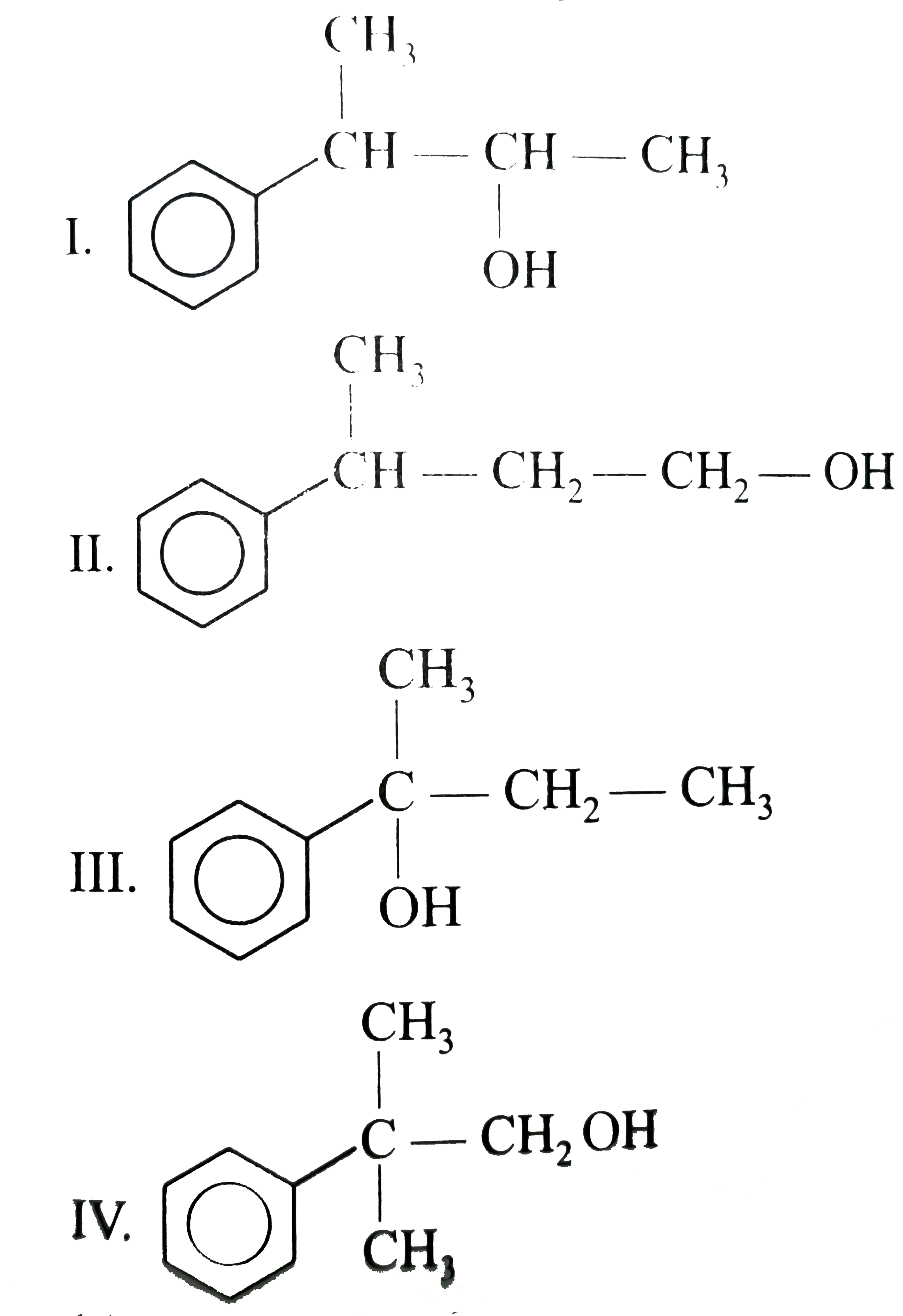Acid catalysed dehydration of 2-pentanol would give
1-pentene as a major product
cis 2-pentene as a major product
trans-2-pentene as a major product
cis- and trans - 2-pentene in equal amount.
The correct Answer is:C
To determine the major product of the acid-catalyzed dehydration of 2-pentanol, we can follow these steps:
1. Identify the Reactant:
The reactant is 2-pentanol, which has the following structure:
CH3CH(OH)CH2CH2CH3
2. Protonation of Alcohol:
In the presence of an acid (H⁺), the hydroxyl group (-OH) of 2-pentanol gets protonated, forming a protonated alcohol:
CH3CH(OH+2)CH2CH2CH3
3. Formation of Carbocation:
The protonated alcohol can lose a water molecule (H₂O) to form a carbocation. The loss of water can occur at the carbon adjacent to the hydroxyl group, leading to the formation of a secondary carbocation:
CH3C+HCH2CH2CH3
4. Carbocation Rearrangement:
The formed carbocation can rearrange to form a more stable carbocation if possible. In this case, there is no rearrangement needed as the secondary carbocation is already stable.
5. Deprotonation to Form Alkene:
The carbocation can lose a proton (H⁺) to form an alkene. There are two possible alkenes that can form: cis-2-pentene and trans-2-pentene. The reaction can proceed to form both isomers.
6. Stability of Alkenes:
Between cis-2-pentene and trans-2-pentene, trans-2-pentene is more stable due to less steric hindrance between the larger alkyl groups.
7. Final Products:
Therefore, the major product of the acid-catalyzed dehydration of 2-pentanol is trans-2-pentene, while cis-2-pentene is the minor product.
Conclusion:
The major product of the acid-catalyzed dehydration of 2-pentanol is trans-2-pentene.
---
The reactant is 2-pentanol, which has the following structure:
CH3CH(OH)CH2CH2CH3
In the presence of an acid (H⁺), the hydroxyl group (-OH) of 2-pentanol gets protonated, forming a protonated alcohol:
CH3CH(OH+2)CH2CH2CH3
The protonated alcohol can lose a water molecule (H₂O) to form a carbocation. The loss of water can occur at the carbon adjacent to the hydroxyl group, leading to the formation of a secondary carbocation:
CH3C+HCH2CH2CH3
The formed carbocation can rearrange to form a more stable carbocation if possible. In this case, there is no rearrangement needed as the secondary carbocation is already stable.
The carbocation can lose a proton (H⁺) to form an alkene. There are two possible alkenes that can form: cis-2-pentene and trans-2-pentene. The reaction can proceed to form both isomers.
Between cis-2-pentene and trans-2-pentene, trans-2-pentene is more stable due to less steric hindrance between the larger alkyl groups.
Therefore, the major product of the acid-catalyzed dehydration of 2-pentanol is trans-2-pentene, while cis-2-pentene is the minor product.
The major product of the acid-catalyzed dehydration of 2-pentanol is trans-2-pentene.
Topper's Solved these Questions
- ORGANIC REACTION MECHANISMS-IVBOOK - RESONANCE ENGLISHCHAPTER - ORGANIC REACTION MECHANISMS-IVEXERCISE - APSP PART-3
22 Videos
- ORGANIC REACTION MECHANISMS-IVBOOK - RESONANCE ENGLISHCHAPTER - ORGANIC REACTION MECHANISMS-IVEXERCISE - APSP PART-1
30 Videos
- ORGANIC REACTION MECHANISMS - IIBOOK - RESONANCE ENGLISHCHAPTER - ORGANIC REACTION MECHANISMS - IIEXERCISE - APSP Part - 3
22 Videos
- PERIODIC TABLE & PERIODICITYBOOK - RESONANCE ENGLISHCHAPTER - PERIODIC TABLE & PERIODICITYEXERCISE - ORGANIC CHEMISTRY(BASIC CONCEPTS)
27 Videos
Similar Questions
Knowledge Check
Acid catalysed dehydration of t-butanol is faster than that of n-butanol because
Atertiary carbocation is more stable than primary carbocationBprimary carbocation is more stable than tertiary carbocationCt-butanol has a higher boiling pointDrearrangement takes place during dehydration of t-butanol.The major product of acid catalysed dehydration of 2-methylcyclohexanol and butan-1-ol are respectively
A1-methylcyclohexene and but-1-eneB2-methylcyclohexene and but-2-eneC2-methylcyclohexene and butaneD1-methylcyclohexene and but-2-ene.
Dehydration of the above compound will give :Ameso productBracemic mixtureCdiastereomerDoptically pure enantiomer
(a) Predict the major product of acid catalysed dehydration of 1-Methylcyclohexanol.
(b) You are given benzene, conc. H2SO4,NaOH and did. HCI. Write the preparation of phenol using these reagents.
View SolutionExplain the mechanism of the following reactions :
(i) Addition of Grignard reagent to a carbonyl compound forming an adduct followed by hydrolysis.
(ii) Acid catalysed dehydration of alcohol forming an alkene.
View SolutionWhich of the following alkene in acid catalysed hydration form 2−methyl propan −2−ol ?
View SolutionIn the acid catalyzed dehydration of alcohols to alkenes, the intermediate species formed is
View SolutionPredict the major product of acid catalysed dehydration of
(i) 1-methylcyclohexanol and (ii) butan-1-ol
View Solution

